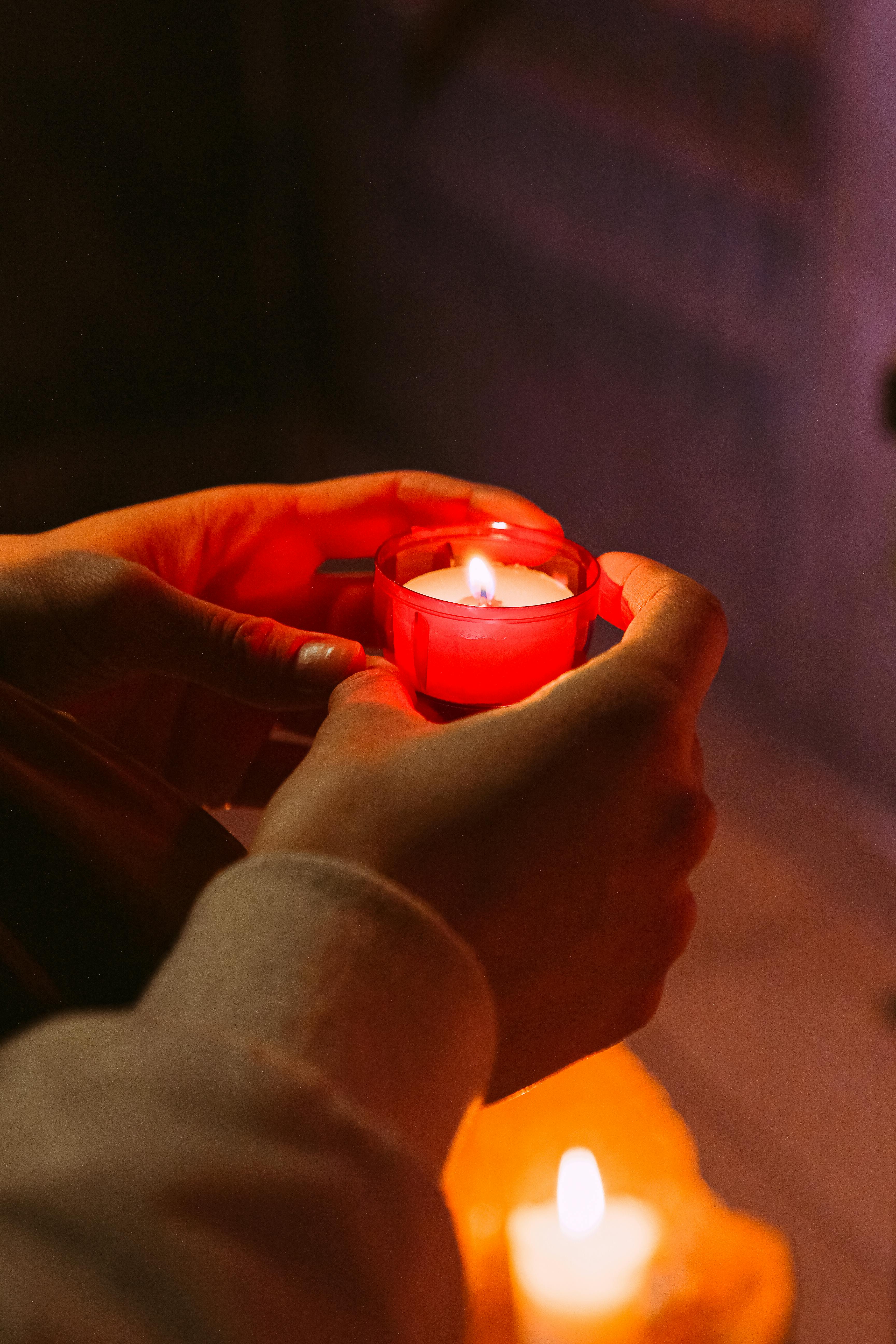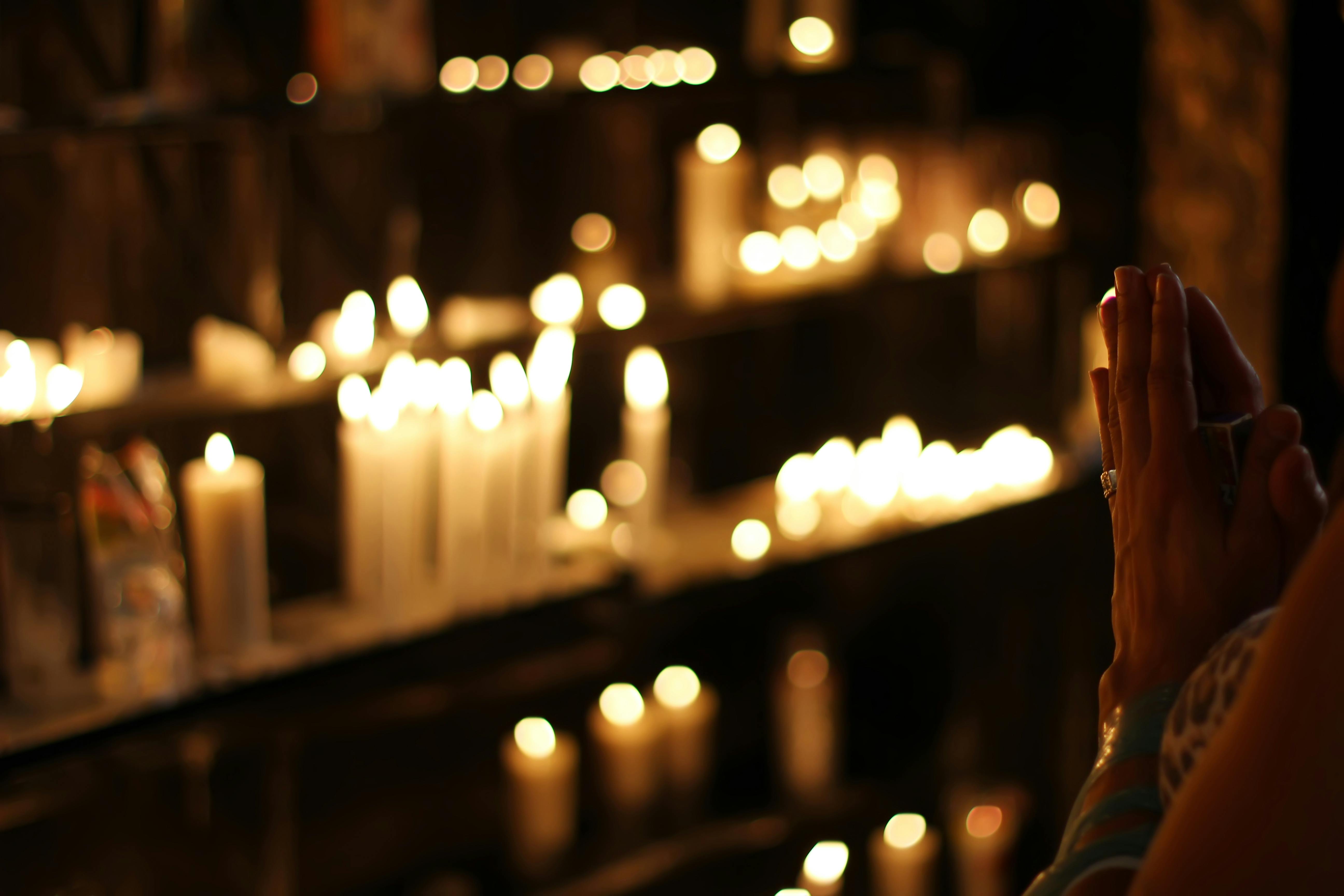‘severance’ And Pop Culture Visions Of Hell

Three years after its first season became an award-winning hit, sci-fi drama Severance is back for a second season. Executive produced by Ben Stiller, the Apple TV+ show is a refreshingly original hybrid that combines the fan-theory-fueling mystery of Lost, the comedic surrealism of Twin Peaks, and the workplace satire of The Office.
The show’s central conceit opens up big questions and all manner of dramatic possibilities. A fictional corporation—Lumon Industries—has invented a technology that “severs” its employees’ consciousness between their Lumon-employee workplace self (their “innie”) and their outside-work self (their “outie”).
The disturbing premise means the show’s leading characters—Mark S. (Adam Scott), Dylan G. (Zach Cherry), Helly R. (Britt Lower), and Irving B. (John Turturro)—live two separate, compartmentalized lives with no awareness of the other. When working at Lumon, they’re unaware of the griefs, loves, and relationships of their nonwork self. And vice versa. Sadly, that’s why people opt in to the program. They want a clean break—uncompromising boundaries—between their job self and their self outside work.
Perhaps for a generation growing accustomed to blurred lines between work and home, the “severance” pitch sounds like heaven. But quickly in the series, and throughout its two seasons, the reality of being severed turns out to be much more like hell.
Religious Allusions in ‘Severance’
The world-building in Severance is infused with religious iconography. Lumon’s founder and longtime CEO, Kier Eagan, is revered as something of a deity (“Praise Kier!” employee-disciples occasionally exclaim). Company handbooks are positioned as sacred texts. Training videos feel catechetical. Lumon’s “nine core principles” are a secular riff on the nine fruit of the spirit (Gal. 5:22–23). Performance reviews invoke theological words like “atonement.” The workplace environment is heavily legalistic and defined by merits and demerits, incentives and penitential punishments—not to mention constant surveillance by creepy supervisors and middle managers.
Motifs of light and dark pervade. Lumon’s name suggests light, and its office interiors are bright white while the outside world is almost always rendered in darker, nocturnal shades. Of course, the reality is the opposite: Lumon is the dark, cruel entity, and its posturing as “light” is a devilish deception. When Mark and his severed coworkers start to unmask this deception and attempt a rebellion to expose the lies (season 1 finale), it feels akin to the biblical value of light exposing darkness (e.g., Eph. 5:11–14). Mark’s role evokes Neo’s in The Matrix—an unlikely hero who wakes up to the realities of an oppressive regime and tries to catalyze an insurrection to destroy it from within.
Is Lumon ‘The Bad Place’?
The biggest theological idea in Severance involves visions of hell and judgment. When the series premiered on February 18, 2022, the title of episode 1 made the motif explicit: “Good News About Hell.” The leading female protagonist has “hell” in her name (Helly R.), and she has flame-red hair. The mysterious work Mark, Helly, and their “severed” coworkers do is called “refining”—a word associated with fire. In season 2, a few characters talk about heaven and hell at length over dinner, pondering whether one’s innie could go to heaven even if one’s outie goes to hell.
The biggest theological idea in Severance involves visions of hell and judgment.
The “underworld” vibe of the series is underscored not only in the Lumon building’s geography (one has to take an elevator down to the “severed floor”) but also in occasional references to mythological figures like Persephone, the Greek goddess of the underworld. There’s a mysterious “goat room” on Lumon’s severed floor (full of actual goats and goat keepers), which—along with other allusions to goats throughout the series—could be a reference to the biblical parable of the sheep and the goats (Matt. 25:31–46), with the latter symbolizing those who “will go away into eternal punishment.”
Lumon founder Kier has a name that evokes Ker, which in Greek mythology is a goddess of death, “especially of violent death in battle.” Perhaps that’s connected to the name of the all-important project that occupies every working hour of Mark’s and his fellow refiners’ time: “Cold Harbor.” This happens to be the name of an 1864 Civil War battle that resulted in the violent deaths of 1,844 Union soldiers.
Life within Lumon is characterized by an ambience that mirrors the “four tempers” that Kier says define every human mind: Woe, Frolic, Dread, and Malice. With the exception of “frolic,” these ominous words evoke hell. Episode 4 of season 2 (“Woe’s Hollow”) is full of wintry woe, dread, and malice. The episode ends with Mr. Milchick (Tramell Tillman) uttering these words of woe to a “terminated” character: “May Kier’s mercy follow you into the eternal dark.” In this moment and others in Severence, I thought of Dante’s Inferno and the famous inscription above the entrance to hell: “I am the way into the city of woe . . . I am the way into eternal pain. . . . Abandon all hope you who enter here.”
Hell: Dividing What God Joined Together
Even more than the frequent aesthetic accoutrements of or subtle allusions to hell, however, the show’s central idea encapsulates hell thematically.
To be “severed” in the manner of the unfortunate characters in the show would be hell on earth. If heaven will be an experience of wholeness, integration, and true humanity like we’ve never fully experienced before, hell will likely be the opposite: division, disintegration, inhumanity, separation from God and others. And that’s what Severance bleakly envisions.
The show captures the woe that would be an existence of only labor. The innies whose existence is exclusively toilsome—no rest, no weekend, no leisure, no Sabbath—are experiencing the opposite of how heaven is described in Scripture: a place of lasting Sabbath in God’s presence (Heb. 4:9–10), where we’ll experience rest from our labors (Rev. 14:13).
But the outies are also experiencing a hell of sorts. A life with no work and only rest would also be bleak. Work and rest find their meaning in their relationship with one another. If we never worked, a weekend wouldn’t be special. If we never grew tired from labor, sleep wouldn’t be sweet. And yet if we never had rest, we couldn’t work. Like so much in God’s brilliantly defined creation, the work-rest pairing is harmonious and complementary: light and darkness (Gen. 1:4), day and night (v. 5), land and seas (vv. 9–10), male and female (v. 27), work and rest (v. 28; 2:2–3).
Work and rest find their meaning in their relationship with one another.
And what God has joined together, let no man put asunder. If we divorced the God-created, rhythmic pairing of work-rest in the way Severance does, the meaning of both would collapse and we’d be miserable. It’d be the “hell” of flatness, sameness, monochrome infinity with no variation or dynamism. Like the misery of a world with only males, or only night, or only seas, or only one’s self.
God’s creation is defined by balance, contrast, and pleasing complementarity, and I believe his new creation will be too. It’ll be a joyous place of diversity in community: God dwelling with us, and us with each other as the people of God. Hell will be an experience of utter isolation and inward-turning claustrophobia: the double horror of being deprived of God’s glorious presence and also getting sick of ourselves—the self we can’t escape, the liberated self-determination that turns out to be utterly lonely and hopeless.
The “self” that emerges in Severance is close to this hellish version, reminiscent of Augustine’s notion of incurvatus in se: curving inward on oneself. Though in this case, the distortion is more of a cutting-in-half of the self. The severed employees are dis-integrated and deeply lonely, each of their halves unknown to the other. Yet sadly, it’s a decision they opted into: a hell of their own choosing.
Cultural Interest in the Afterlife
It’s interesting how often pop culture narratives explore the afterlife. Lost ended its six-season run with a hokey depiction of an interfaith purgatory realm. The Good Place explored heaven and hell through the genre of TV comedy. Movies like What Dreams May Come have pondered it. Dark shows like Squid Game and The Walking Dead seem interested in “hell on earth” scenarios: what humans are capable of doing to one another and what ghoulish beings we can become.
And then there are the many movies in the highly popular “ghost story” genre—movies that assume the existence of supernatural realms. Steven Soderbergh’s just-released Presence is one of the better recent twists on the genre. David Lowery’s A Ghost Story (2017) also stands out. Even a lighthearted kids’ movie like Pixar’s Soul (2020) explores afterlife worlds.
In a supposedly “disenchanted” world, most people can’t stop speculating about afterlife mysteries. A recent Pew survey found that 71 percent of Americans believe in heaven and 61 percent believe in hell. What’s behind this belief? An indwelling gut instinct that we’re eternal beings? A hope that cosmic justice exists? A desire that sheep and goats really will be eternally separated by a perfectly righteous judge?
Whatever’s driving this enduring interest, shows like Severance bear witness to it, providing provocative artistic rumination on vital spiritual questions that aren’t going away.


